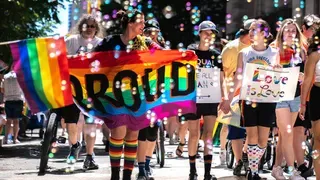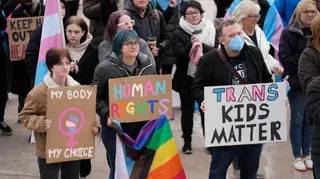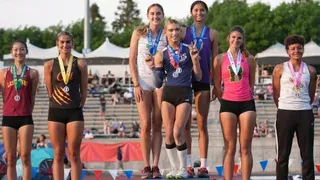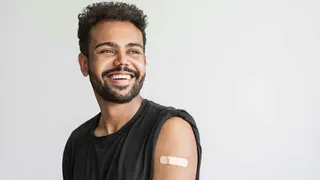February 13, 2013
Fenway Gets $800,000 to Study Disparities in Gay Youth of Color
Antoinette Weil READ TIME: 4 MIN.
In an effort to address the widening gap in health and risk behavior between LGBTQ youth of color and their white counterparts, The Fenway Institute of Boston has been awarded a three-year, $800,000 grant by the National Institute of Health to research and create solutions for health disparities in LGBTQ youth of color.
BAGLY, JRI Health, the Massachusetts Commission on LGBT Youth, and the Sidney Borum Jr. Health Center will be partners in the grant, which will be overseen by the National Institute of Minority Health and Health Disparities (NIMHD), a branch of NIH.
"LGBTQ youth of color face specific and more extensive challenges," said Judith Bradford, PhD, Co-Chair of the Fenway Institute and Principal Investigator for the grant. These challenges can include ostracism by their families and ethnic or racial groups, racism in the LGBTQ community and both homophobia and racism in broader society.
Perhaps as a result, data has shown that LGBT youth of color are at higher risk of homelessness, substance abuse, suicide attempts and risky sexual behavior than both their straight peers and white LGBT youth.
As Julian Cyr, chair of the Mass Commission on LGBT Youth notes, one size does not fit all.
"All LGBT youth experience is not the same, all youth of color experience is not the same and all experience of LGBT youth of color is not the same. But data shows that this group as a whole is experiencing higher risk," said Cyr.
"The barriers they face and a lack of social support can limit them becoming the best people they can be," said Bradford. "We want to help them grow to lead successful lives with good self-confidence."
As such, the aim of this initiative will be focused on coming up with effective methods of intervention and prevention. The Fenway Institute and its partners in this project will be using a method of research called community based participation research (CBPR), meaning that the subject of the study will actually take part in the research process.
Two separate Community Advisory Boards will be formed to meet both separately and collaboratively to discuss research findings and to come up with the best possible approaches to tackling this problem. One of the Advisory Boards will be composed of government officials and LGBTQ community leaders from the area. The other will be made up of LGBTQ youth of color, the population for which this research is being done in the first place.
"That's the point," said Dr. Nathaniel Stinson, director of the Division of Scientific Programs for the National Institute of Minority Health and Health Disparities. "In CBPR they're not just subject to research, they have a stake and a say in solutions and outcomes."
The first Community Advisory Board meeting will take place in March, at which time some of the key players will determine who should be involved, both for community leaders and for the youth division of this research team. Bradford suggests that by late fall there will be a mapped out plan as to which specific topics should be examined and what research methods will be used.
"Good public policy is evidence based," said Cyr. "The National Institutes of Health grant is going to enable all of our organizations to apply evidence-based best practices."
The Fenway Institute's proposal for this grant was chosen out of several hundred applications from around the country.
Bradford said that because of the strong LGBT community and organizations in Boston, they were able to provide good data to make a solid case for this funding to be awarded.
"Their proposal to work with the community and create solutions where we know there is a gap and a problem was a very good fit for this initiative," said Stinson. "The peer review process thought it was excellent."
While the Fenway Institute has only been granted three years of support from the NIH, there is potential for this venture to go on much further. According to Stinson, if after the initial three years the research has been done right and done well, they may be able to gain another five years of funding to implement the plan they've carved out. And if all goes well in this phase, they may be able to take their work a step further to the three-year "dissemination phase" to spread their findings to a larger audience. All in all, The Fenway Institute has the potential to have continued resources for 11 years.
"It's quite a responsibility for the people involved, but I'm confident we're going to do it," said Bradford.
Both Dr. Bradford and Dr. Stinson are confident that the work done by the Fenway Institute and its partners under this grant has the potential to make a positive and lasting impact for LGBTQ youth of color in Boston and around the country.







